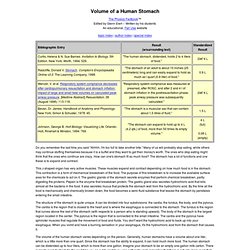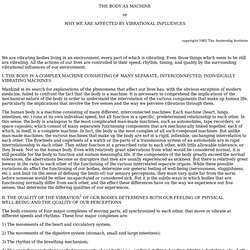

Food and Teleology. By Robin Phillips|Published Date: November 05, 2012 Nominalism 4 As kingfishers catch fire, dragonflies dráw fláme;As tumbled over rim in roundy wellsStones ring; like each tucked string tells, each hung bell’sBow swung finds tongue to fling out broad its name;Each mortal thing does one thing and the same:Deals out that being indoors each one dwells;Selves—goes itself; myself it speaks and spells,Crying Whát I do is me: for that I came.

Í say móre: the just man justices;Kéeps gráce: thát keeps all his goings graces;Acts in God’s eye what in God’s eye he is—Chríst—for Christ plays in ten thousand places,Lovely in limbs, and lovely in eyes not hisTo the Father through the features of men’s faces. The above poem is a masterful example of the way English poet Gerard Manley Hopkins (1844–1889) was able to write poetry which sounds like the things he is describing. (This is especially true if the poem is read out loud and properly accented.). The small intestine - The Digestive System and the Liver - blood, body, parts, skin, stomach, food, The Duodenum. By the time food-turned-chyme gets through the pyloric sphincter, it has already traveled about two-and-a-half feet: about 6 inches from lips to epiglottis; 10 or 12 inches down the esophagus; and about a foot through the stomach.

But at this point it has actually traveled less than one-tenth of the gastrointestinal (GI) tract, and the longest stretch lies just ahead: the 20-plus feet of the small intestine, so named because of its relatively small one-to-two inch diameter. The preparation of food particles to pass through the walls of the GI tract is completed in the small intestine—almost completed, in fact, before the chyme has traveled the first foot of the small intestine. By the time it leaves the small intestine, chyme has given up virtually all its nutrients.
Simple Sugars and Complex Carbohydrates – An Incompatible Combination. GET study.pdf (application/pdf Object) How Much Protein Can Be Digested Per Hour? Your body uses protein for a wide variety of purposes, including cell/tissue repair, immune system function and hormone regulation.

If you’re seeking to know how much protein your body can digest per hour, chances are you’re looking to maximize protein’s ability to help you build muscle. Protein is the main nutrient involved in the muscle development process but only when consumed in the right amount. If you plan to supplement protein, consult your doctor first. The digestion process of protein starts right after consumption.
Your stomach begins breaking down the protein into smaller particles called amino acids. Absorption of amino acids is a part of the digestion process. Because different sources of protein digest and absorb at varying rates, it’s impossible to determine exactly how much protein your body digests per hour. Consuming more protein than your body can handle, especially in one sitting, will not lead to greater gains in strength or size.
Composition of the adult digestive tract bacterial microbiome based on seven mouth surfaces, tonsils, throat and stool samples. Volume of a Human Stomach. Topic index | author index | special index Do you remember the last time you said "Ahhhh, I'm too full to take another bite.

" Many of us will probably stop eating, while others may continue stuffing themselves because it is a buffet and they want to get their money's worth. The ones who stop eating might think that the ones who continue are crazy. How can one's stomach fit so much food? The stomach has a lot of functions and one these is to expand and contract. This J-shaped organ has very active muscles. Greek Medicine: FASTING AND PURIFICATION. The Body As Machine. Or copyright 1982 The Anstendig Institute We are vibrating bodies living in an environment, every part of which is vibrating.

Even those things which seem to be still are vibrating. Each human has one of only three gut ecosystems - life - 20 April 2011. You're probably the member of a club you didn't even know existed.

According to research published this week, we all have one of three ecosystems of bugs in our guts. New Scientist explores what this surprising discovery means, and how our internal fauna might affect our everyday lives. Why might the types of bugs we carry be important? We think of our bodies as our own, but actually only a tenth of our cells are human. The rest are all hitch-hikers, mainly harmless bacteria that have evolved with us. There are 100,000 billion of these bacteria in our guts, where they play a crucial role in our health by helping to break down food and convert it into energy, and by excluding bacteria that are harmful to us.
The types of bugs that call us home could explain differences in our ability to digest food and resist disease, and how we react to drugs. Isn't it surprising that all humans share only three predominant gut-bug ecosystems, given our diverse diets, lifestyles and gene-profiles?